Columbia University boasts a rich history and a vibrant campus life. Unearthing its intriguing aspects is like embarking on a treasure hunt. In this exploration, we will delve into a few captivating facts that define the unique essence of this prestigious institution.
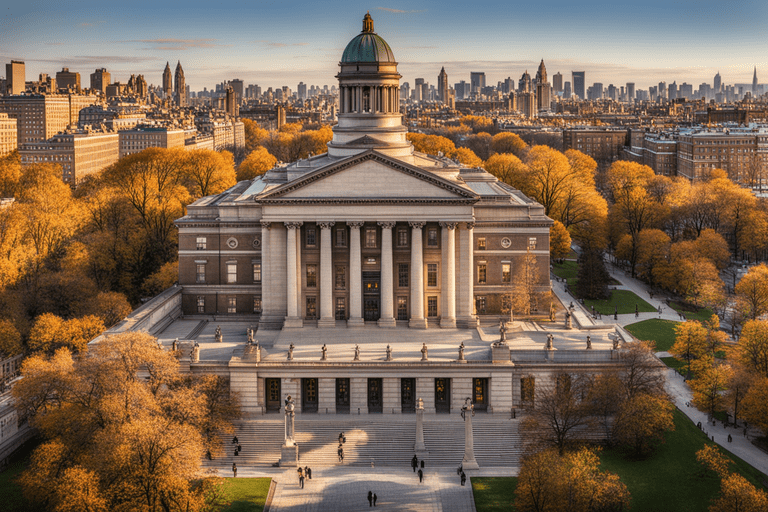
One of the university’s most notable characteristics is its impressive roster of alumni, featuring influential figures from a wide array of fields. From former U.S. Presidents like Barack Obama to renowned artists like Lang Lang, Columbia has left an indelible mark on the world.
While its iconic library, Butler Library, stands as an imposing presence, not everyone knows that it boasts an underground tunnel system connecting various campus buildings, allowing students to navigate inclement weather without ever setting foot outside. These remarkable tidbits are just the tip of the iceberg in our journey of discovery at Columbia University.
Quick Fun Facts About Columbia University
- The MGM Studio’s Lion mascot drew inspiration from Columbia University’s Lion mascot.
- Columbia’s Havemeyer 309 lecture hall has been featured in numerous Hollywood movies, including Spiderman, Kinsey, Ghostbusters, and Mona Lisa’s Smile.
- Freshmen participate in the “First Year March” during orientation week, symbolically entering campus through the main gate to be introduced as Columbians for the first time.
- “40s on 40s” is a tradition where seniors celebrate their final weeks on campus by drinking 40oz malt liquor on the steps of Low Library forty days before graduation.
- Rockefeller Center was built on land that was once owned by Columbia University.
- Columbia University is the second-largest landowner in New York City, following only the Catholic Church.
- Columbia is the only school with two graduates in the Baseball Hall of Fame: Lou Gehrig and Eddie Collins.
- Notable celebrities like Julia Stiles, Jake Gyllenhaal, and James Franco are alumni of Columbia.
- Columbia played against Princeton in a baseball game at Baker Field, marking the first sporting event ever televised in 1939.
- The word “trivia” was first used to describe the game at Columbia, despite its prior use for a different definition.
Also Read this: 40 Fascinating Fun Facts about Michigan State University
A Brief History of Columbia University
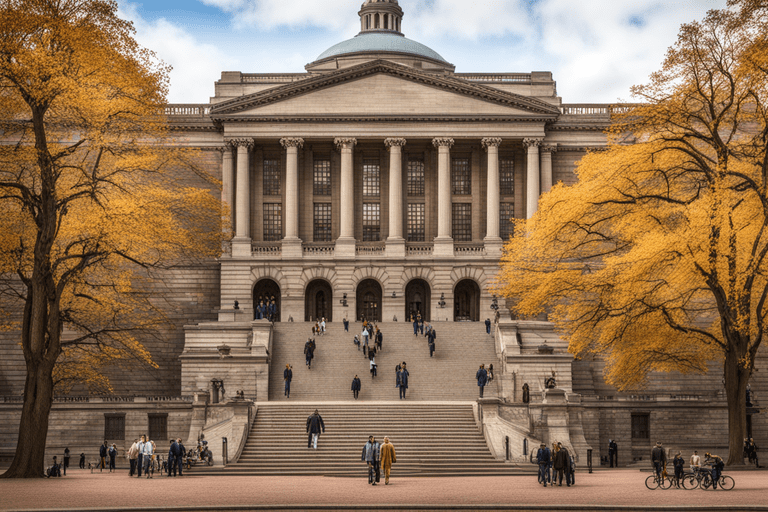
Founding and Early Years
Columbia University, founded in 1754 as King’s College, has a rich history rooted in its commitment to quality education and academic excellence. It began as a means to provide Anglican ministers with a robust education, but the American Revolution led to its closure and reopening as Columbia College in 1784. This shift marked a significant turning point in the institution’s history, distancing it from its British origins.
Evolution into Columbia University
Throughout the 19th century, Columbia College transformed into Columbia University, expanding its curriculum to embrace liberal arts and attracting renowned scholars and thinkers. In 1857, it officially became Columbia University, signifying the addition of multiple professional schools.
With the 20th century came a period of tremendous growth and innovation. Columbia University became a prominent center for academic research, and in 1964, it made history by housing the first fully operational electron microscope, revolutionizing biology and medicine. The university’s impact extended beyond scientific advancements, playing a vital role in the civil rights movement and advocating for equality and social justice.
Growth, Innovation, and a Legacy of Social Change
Today, Columbia University continues to shape future leaders, foster groundbreaking research, and contribute to the betterment of society. It remains dedicated to its mission of providing a transformative educational experience and pushing the boundaries of intellectual exploration.
Unique Campus Traditions
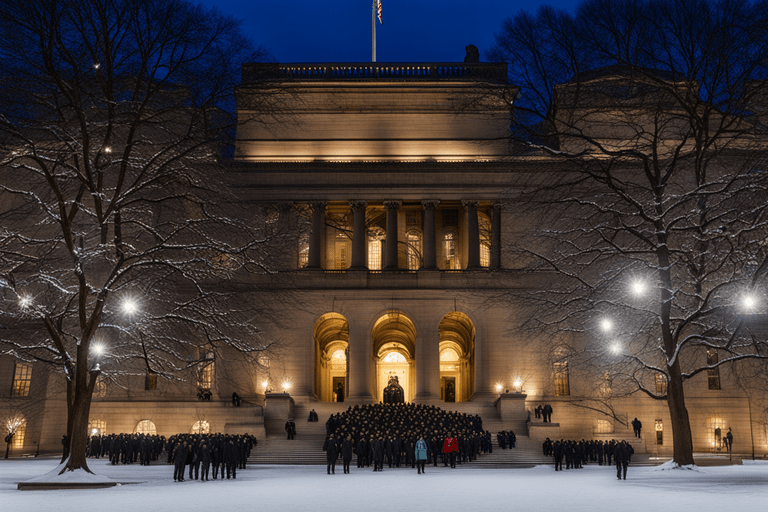
The Tree Lighting Ceremony
Columbia University’s annual Tree Lighting Ceremony is a beloved tradition that ushers in the holiday season and unites the university community. This festive event features cheerful music, hot chocolate, and the illumination of a towering evergreen tree.
A Festive Gathering at Sunset
As the sun sets and the air turns chilly, the campus comes alive with excitement. Students eagerly gather around the designated area, their faces flushed with anticipation. The aroma of freshly brewed hot chocolate wafts through the air, adding to the festive atmosphere. The sound of cheerful chatter and laughter fills the space as friends and acquaintances reunite for this special occasion.
The Grand Tree Lighting Spectacle
When the clock strikes the appointed hour, a hush falls over the crowd. The university’s marching band takes their place, instruments at the ready. The first notes of a beloved holiday tune fill the air, and the crowd erupts in applause and cheers. The band’s lively performance sets the stage for the main event—the lighting of the magnificent evergreen tree.
A Spectacular Tree Illumination
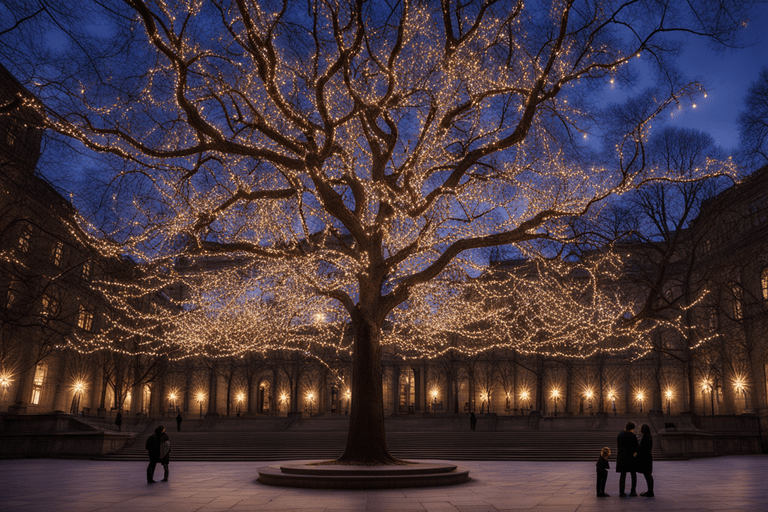
The tree stands tall and proud, adorned with twinkling lights and colorful ornaments. As the switch is flipped, the tree illuminates the night, casting a warm and inviting glow over the campus. The crowd erupts in awe and delight, their faces illuminated by the tree’s radiant beauty.
The Tree Lighting Ceremony is not just a festive event; it is a time-honored tradition that brings the Columbia University community together, reminding everyone of the importance of unity, joy, and goodwill during the holiday season and beyond.
Orgo Night
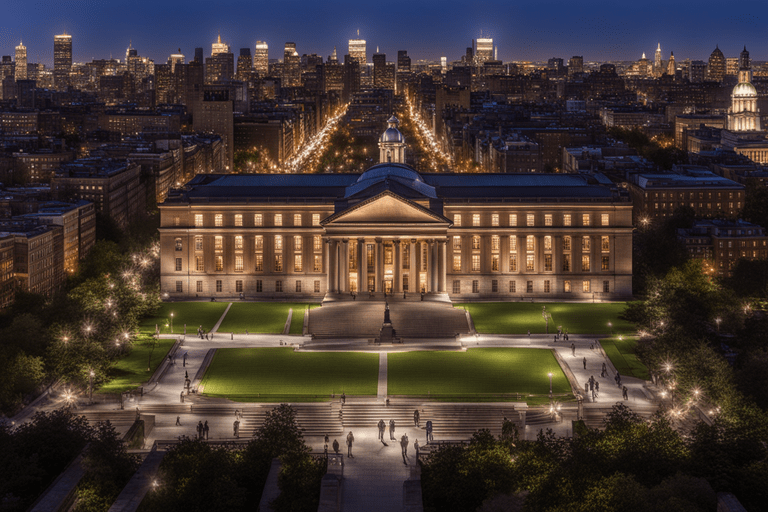
Orgo Night is a tradition that provides humor and levity during the stressful period leading up to the organic chemistry final exam. The Columbia University Marching Band puts on a humorous musical show in the Butler Library on the night before the exam.
As the semester draws to a close and the weight of exams hangs heavy in the air, students find solace in the anticipation of Orgo Night. The Butler Library, typically a place of quiet study, transforms into a lively and vibrant space. The sound of instruments being tuned and laughter echoing through the halls replaces the usual hushed whispers.
A Midnight Burst of Laughter
At midnight, Orgo Night officially begins as the marching band bursts into the library in their signature blue and white uniforms. Their energetic performance captivates the audience, drawing smiles and laughter from even the most stressed-out students.
The band’s repertoire includes clever parodies of popular songs with lyrics tailored to the challenges of organic chemistry. The audience eagerly sings along, finding relief in the shared experience of academic challenges. The band’s witty banter and comedic skits add an extra layer of entertainment, ensuring that the atmosphere remains light-hearted and enjoyable.
Orgo Night serves as a reminder that even in the midst of academic pressure, it is important to find moments of joy and laughter. It brings together students from different majors and backgrounds, fostering a sense of camaraderie and support.
Notable Alumni and Achievements
Nobel Laureates from Columbia
Columbia University boasts a rich history of producing Nobel laureates. Some notable laureates include physicist Enrico Fermi, economist Joseph Stiglitz, and chemist Roald Hoffmann.
Enrico Fermi, a renowned physicist and Nobel laureate, made significant contributions to nuclear physics. His work on the development of the first nuclear reactor played a crucial role in the advancement of atomic energy, shaping the scientific community.
Nobel Laureates Shaping Economics and Chemistry
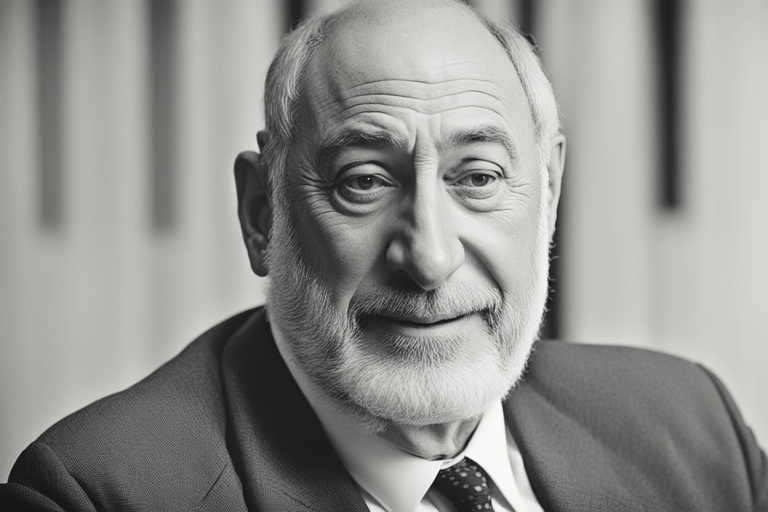
Joseph Stiglitz, an esteemed economist and Nobel laureate, has made significant contributions to economics, particularly in the study of information asymmetry and market failures. His research has influenced global economic policies and our understanding of economic issues.
Roald Hoffmann, a distinguished chemist and Nobel laureate, has provided valuable insights into chemical reactions and molecular structures. His work has not only advanced our understanding of chemistry but also paved the way for the development of new materials and technologies.
Famous Figures in Arts and Entertainment
Columbia University has been a nurturing ground for talented individuals in the arts and entertainment industry. Renowned filmmaker Kathryn Bigelow, Pulitzer Prize-winning playwright Tony Kushner, and actor Jake Gyllenhaal are among the successful alumni who have made significant contributions to their respective fields.
Shaping the World of Film and Theater
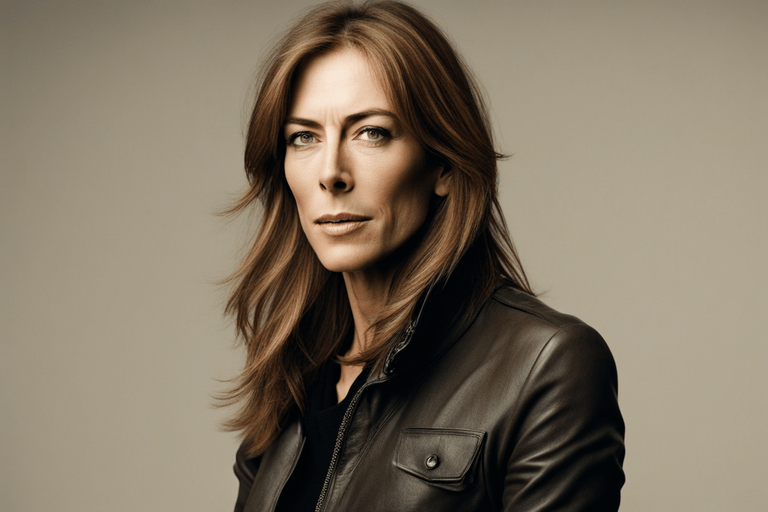
Kathryn Bigelow, an acclaimed filmmaker and Columbia alumna, has challenged norms in the film industry with her powerful and thought-provoking works.
Tony Kushner, a Pulitzer Prize-winning playwright, is known for his politically charged plays that have sparked important conversations about identity, politics, and social justice.
Columbia’s Contribution to the World of Entertainment
Jake Gyllenhaal, a versatile actor and Columbia graduate, has established himself as one of Hollywood’s most talented performers.
These notable alumni from Columbia University are just a few examples of the incredible talent that has emerged from this prestigious institution, serving as a testament to the quality of education and nurturing environment it provides.
Fun Facts About Columbia University’s Campus
Architectural Highlights
Columbia University’s campus is a blend of various architectural styles, from classical to modern. The iconic Low Memorial Library, designed in the Beaux-Arts style, is a symbol of the university’s historic roots and a favorite spot for students and visitors.
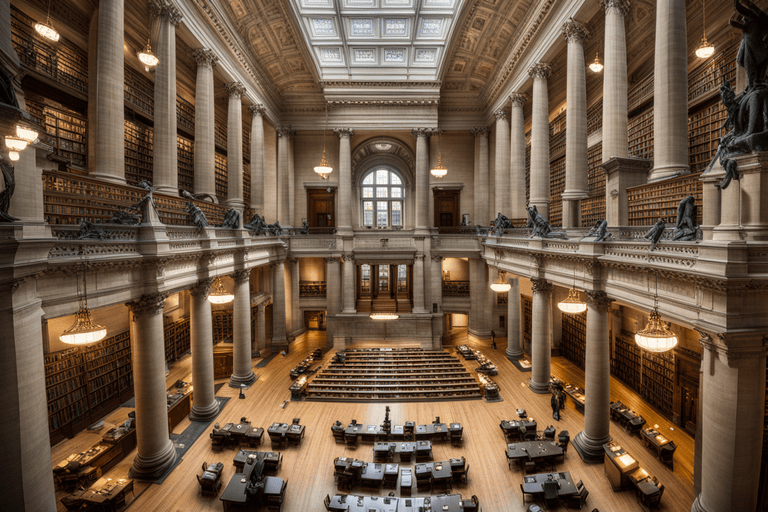
The Butler Library, with its impressive neoclassical architecture, houses a vast collection of books and resources. St. Paul’s Chapel, a beautiful example of Gothic Revival architecture, serves as a place of worship and gathering. Pulitzer Hall, a modern architectural marvel, reflects the university’s commitment to excellence in journalism.
Green Spaces and Outdoor Art
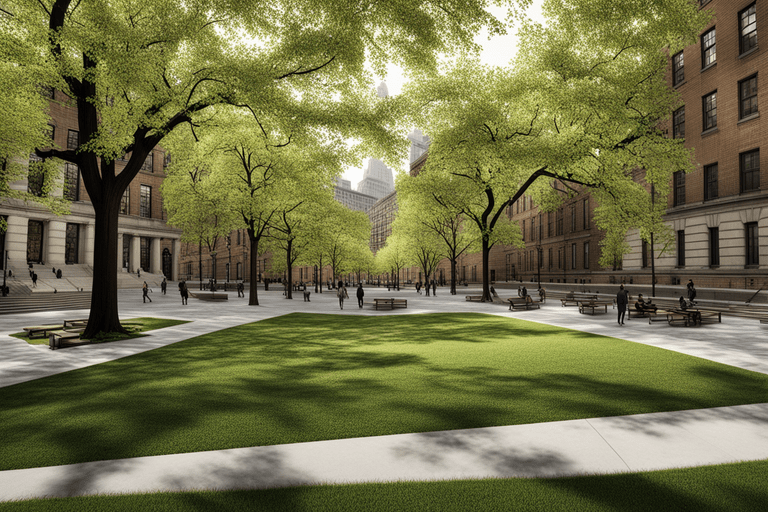
Columbia University’s campus offers an abundance of green spaces and outdoor art installations. The South Lawn is a popular spot for picnics, games, and outdoor study sessions.
Numerous outdoor art installations add to the aesthetic appeal of the campus, including the Pulitzer Prize Fountain and the contemplative Tree-Lined Walk. The Wallach Art Gallery showcases a diverse range of contemporary and historical artworks.
Columbia University’s Impact on New York City
Columbia’s Role in the Local Economy
Columbia University is one of the largest employers in New York City. Providing job opportunities and contributing to the local economy through research grants, partnerships, and collaborations with businesses and organizations.
Community Outreach and Programs
Columbia University is deeply committed to community engagement, offering mentoring initiatives, tutoring services, and partnerships with local schools. The university also organizes public lectures, exhibitions, and events that enrich the cultural life of the city.
Columbia University’s fascinating history, unique traditions, accomplished alumni, beautiful campus. And contributions to New York City make it a truly remarkable institution. Whether you’re a student, an alum, or simply someone interested in academia and culture. Columbia University has a rich tapestry of stories and facts that will captivate your imagination.
FAQs
A: Columbia University was founded on May 25, 1754.
A: The alma mater song of Columbia University is “Stand, Columbia!”
A: Columbia has produced over 100 Nobel laureates throughout its history.
A: Notable alumni include Barack Obama, Ruth Bader Ginsburg, and Warren Buffet.
A: The Core Curriculum is a distinctive feature, requiring students to study foundational texts in various disciplines.